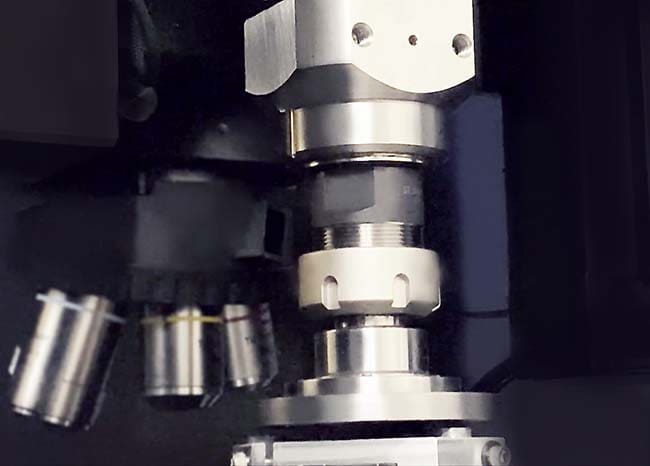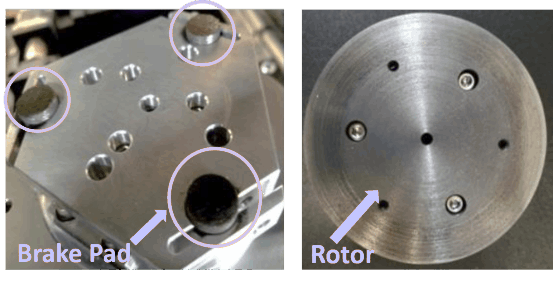Module Information
- Conforms to SAE J2522
- Data comparative to dynamometers
- High torque motors up to 50 Nm
- In-line Torque, acoustic, and temperature measurement
- Reaches 500°C brake test conditions
Why Brake Friction? Brake shoe friction materials are critical elements of every vehicle. Moreover, the advent of hybrid and electric cars, regenerative braking, and current safety regulations are vital motivations for developing brake friction materials.
Rtec Instruments Solution – The brake material tribometer is perfect for lab scale evaluation of a friction material and cost efficiency. High torque 3 phase motors to deliver 50 Nm torque at high speeds allow it to conform to SAE j2522. It enables tests at varying pressures, speeds, temperatures, and deceleration conditions. Rtec Instruments‘ MFT 5000 offers unique advantages over typical small bench top testing systems and full-blown dynamometers.
Brauchen Sie Hilfe oder haben Sie eine Frage?
Learn More About The MFT-5000 Platform
The MFT-5000 Tribometer
Learn more about the versatile MFT-5000 tribometer that provides friction, wear, and surface properties of various materials under a multitude of environments and testing conditions.
Watch Brake Testing in Action
Simulating Brake Testing
The Rtec Brake material screening tester mounts on the MFT-5000 tribometer. With a rigid construction, the MFT-5000 tribometer has high torque motors up to 50 Nm. Firstly, this allows testing parameters as mentioned in SAE j2522. Secondly, the data generated is equivalent to large dynamometers. In addition, the tester comes with several sensors that allow for more comprehensive data generation in a short time. Hence, the brake material screening tester assesses the effectiveness of behavior and tribological properties of candidate materials before proceeding to component level testing.
Test Setup and Results
The MFT 5000 platform can work across various loads (up to 10,000 N) and speeds. SAE J2522 protocols, such as Green µ characteristics, Speed/Pressure sensitivity, cold application, fade, and recovery, are easily simulated. Here, we demonstrate using Rtec’s MFT 5000 brake material testing solution to simulate a subsection of SAE J2522.
Setup
First, we cut sample coupons 12.7 mm X 6.35 mm from real brake and mounted them on a self-leveling brake holder for uniform contact. The counter surface was a 320 Grit cast iron disc. To simulate a snub from SAE J2522, the test started at 300N (0.75 MPa contact pressure) at 2089 rpm. After that, the tester reduced speeds to 787 rpm under load in 5.5s. In other words, these conditions represented a change in speed for motor vehicles from 80 to 30 Km/hr. The load represented 3000 kPa in a fluid line. The tester controlled the speed and load while measuring the interacting surfaces‘ torque, friction, and temperature.
Results
The tester records several advanced sensors, such as acoustic emission and surface temperature, with high precision. The Figure shows the data collected during one cycle. Next, the debris produced is collected for further analysis.
3D Profilometer For Surface Analysis
The Lambda Profilometer looks at brake or rotor surfaces at nm resolution. Furthermore, it is optimized for brake surfaces (dark, rough surfaces). The spinning disk confocal microscopy allows analysis of volume wear, surface roughness, and more of brakes or rotor surfaces. In addition, the profilometer’s dark field imaging mode allows for easy quantification of debris generation and scratches.
Solution To
-
Aerospace
-
Automotive
-
Lubricants
The MFT-5000 Has More To Offer
Möchten Sie mehr erfahren?
Kontaktieren Sie uns und fordern Sie eine Demonstration an.
recommended
Information
© Copyright 2021 Rtec-Instruments - All Rights Reserved







